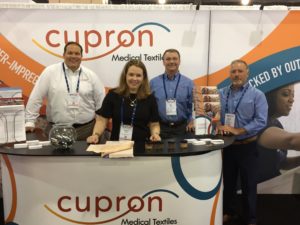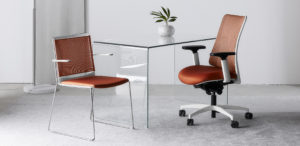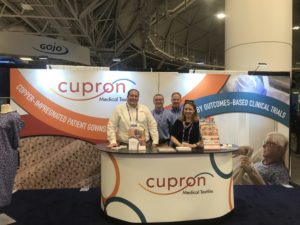
News/Media
Cupron Partner: Via Seating Expands Line Of Copper Enhanced Seating Products

Via Seating has developed a unique copper infused mesh by partnering with Cupron, utilizing their copper-based proprietary and patented technology. The copper mesh works by physically embedding an EPA registered copper into the fibers of our Via Seating copper mesh. Through this process, the copper will not wear off like topically applied alternatives. The result is a self-sanitizing, copper-infused mesh that has strong biocidal, antifungal, and antiviral properties. There are additional anti-odor properties to the copper mesh as well.
Third party testing was performed using three different microorganisms; Staphylococcus aureus, a gram positive bacteria, Klebsiella pneumoniae, a gram negative bacteria and Candida albicans (a yeast) per AATCC-100 on the following surface textiles currently in use in clinical environments:
– Krypton.
– Silvertex.
– Silica.
– Genie Copper Mesh®.
– Genie® Mesh (without infused copper).
These results showed that the Genie Copper Mesh® outperformed the textiles currently in use in clinical areas. Therefore, this mesh back task chair is better than a fully upholstered back task chair for clinical areas and is equal to chairs upholstered with Silvertex.
Cupron at APIC 2018

If you missed our Breakfast Symposium: Copper Never Sleeps: Creating a Hostile Environment for Pathogens on Thursday morning, we have good news!
An increasing number of published trials demonstrate the role of copper as an effective infection prevention measure. With continuously self-sanitizing properties, surfaces embedded with copper are additive to episodic environmental cleaning products and technologies.
In this session we will examine the impact on HAI of embedding copper into the most frequently touched and contaminated (C. diff and MRSA) surfaces in the room. In 2017, Sentara Healthcare expanded the deployment of copper patient gowns and bed linens to an additional six hospitals. Join us as Jacque Butler shares data showing statistically significant reductions in HAI.

